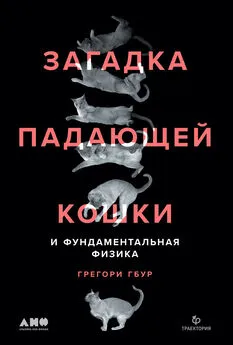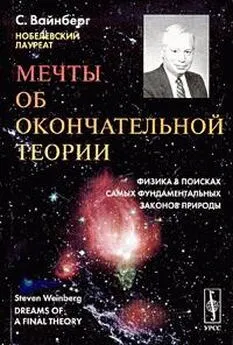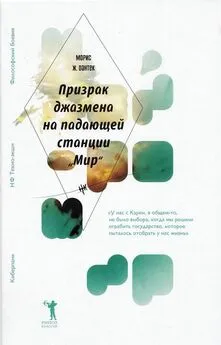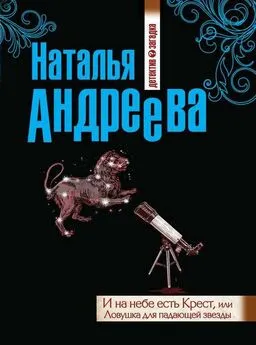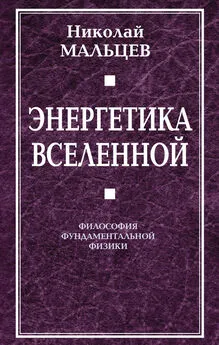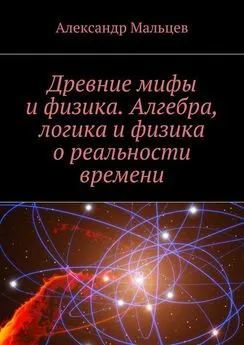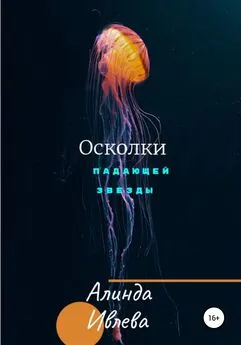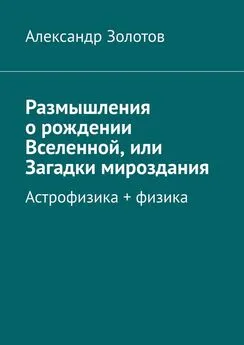Грегори Гбур - Загадка падающей кошки и фундаментальная физика
- Название:Загадка падающей кошки и фундаментальная физика
- Автор:
- Жанр:
- Издательство:Альпина нон-фикшн
- Год:2021
- Город:Москва
- ISBN:978-5-0013-9363-4
- Рейтинг:
- Избранное:Добавить в избранное
-
Отзывы:
-
Ваша оценка:
Грегори Гбур - Загадка падающей кошки и фундаментальная физика краткое содержание
В своей увлекательной и остроумной книге физик и заядлый кошатник Грегори Гбур показывает, как попытки понять механику падения кошек помогли разобраться в самых разных задачах в математике, физике, физиологии, неврологии и космической биологии, способствовали развитию фотографии и кинематографа и оказали влияние даже на робототехнику.
Поиск ответа на загадку падающей кошки погружает читателей в увлекательный мир науки, из которого они узнают решение головоломки, но также обнаружат, что феномен кошачьего выверта по-прежнему вызывает горячие споры ученых.
Автор убежден, что чем больше мы исследуем поведение этих животных, тем больше сюрпризов они нам преподносят.
Загадка падающей кошки и фундаментальная физика - читать онлайн бесплатно ознакомительный отрывок
Интервал:
Закладка:
14. «How Do Cats Always Land on Their Feet?»; «Leopard Cub Falling Out of a Tree».
15. McDonald, «How Does a Cat Fall on Its Feet?»; McDonald, «How Does a Man Twist in the Air?».
16. Biesterfeldt, «Twisting Mechanics II»; Frohlich, «Do Springboard Divers Violate Angular Momentum Conservation?»; Yeadon, «The Biomechanics of Twisting Somersaults»; Dapena, «Contributions of Angular Momentum and Catting».
17. Frohlich, «Do Springboard Divers Violate Angular Momentum Conservation?».
Глава 12
1. У «медвежьей загадки» есть и другое решение; более того, таких решений бесконечное множество. Эту загадку привел и объяснил Мартин Гарднер в книге: M. Gardner, My Best Mathematical and Logic Puzzles.
2. Foucault, «Physical Demonstration of the Rotation of the Earth».
3. «Foucault, the Academician».
4. Вы могли бы возразить: «Что, если я пройду вперед десять футов, затем сдвинусь приставным шагом на десять футов влево, затем пройду десять футов задом наперед, а затем приставным шагом десять футов вправо? Маятник ни разу не изменит направления качания». Вы правы, но в нашем примере — и в физике — мы ограничиваемся тем, что называют параллельным переносом , что означает, по существу, что мы всегда держим поднос в одинаковом положении относительно направления движения.
5. Berry and Wilkinson, «Diabolical Points in the Spectra of Triangles».
6. Berry, «Geometric Phase Memories».
7. Berry, «Quantal Phase Factors Accompanying Adiabatic Changes».
8. Mead and Truhlar, «On the Determination of Born-Oppenheimer Nuclear Motion Wave Functions».
9. Pancharatnam, «Generalized Theory of Interference».
10. Мы не можем непосредственно наблюдать колебания видимого света, частота которых составляет примерно миллион миллиардов раз в секунду.
11. Berry, «The Adiabatic Phase and Pancharatnam’s Phase».
12. Marsden, Montgomery, and Ratiu, «Reduction, Symmetry, and Phase in Mechanics».
13. Batterman, «Falling Cats, Parallel Parking, and Polarized Light».
14. Полный круг составляет 360°, или 2π радиан.
15. На самом деле кошки длинные и тощие и представляются геометрической фигурой, больше похожей на яйцо.
16. Montgomery, «Gauge Theory of the Falling Cat»; Iwa, «Classical and Quantum Mechanics of Jointed Rigid Bodies».
17. Chryssomalakos, Hernández-Coronado, and Serrano-Ensástiga, «Do Free-Falling Quantum Cats Land on Their Feet?».
Глава 13
1. Levenson, Newton and the Counterfeiter , p. 8.
2. «Philosophy and Common Sense».
3. J. M. Wright, Alma Mater, pp. 15–18.
4. Graves, Life of Sir William Rowan Hamilton, vol. 3, pp. 235–236.
5. Diecke, «Robert Williams Wood».
6. Seabrook, Doctor Wood.
7. «A Story of Youth Told by Age: Dedicated to Miss Pola Fotich, by Its Author Nikola Tesla», in Tesla: Master of Lightning.
8. Эта часто цитируемая фраза взята из письма Альберта Эйнштейна Микеле Бессо от 12 декабря 1951 г. Моя благодарность доктору Йенсу Фоэллу за помощь с переводом.
9. Письмо к Илзе Кайзер-Эйнштейн и Рудольфу Кайзеру от 21 мая 1924 г., в: The Collected Papers of Albert Einstein, vol. 14, p. 214.
10. Schrödinger, The Present Situation in Quantum Mechanics, pp. 152–167.
11. Maxwell, «Induction and Scientific Realism», p. 290.
12. «Finds Spiral Nebulae Are Stellar Systems», New York Times, 23 ноября 1924 г.
13. Wehrey, «Hubble and Copernicus».
14. Там же.
15. Woodruff, «WoodruffLetter».
16. Hetherington, «Letter to Ms. Lubkin».
17. Weber, More Random Walks in Science.
18. C. Opper, «Jack Hetherington Finds Beauty in Data», Lansing City Pulse, 8 июня 2016 г.
19. Takagi et al., «There’s No Ball without Noise».
20. Blakemore, «Cats Are Adorable Physicists».
Библиография
«Adunanza del 5 maggio 1895». Atti della Reale Accademia delle scienze di Torino, 30:513–514, 1895.
Anderson, A. «Analyzing Motion». Pearson’s Magazine, 13:484–491, 1902.
Arabyan, A., and Derliang Tsai. «A Distributed Control Model for the Air-Righting Reflex of a Cat». Biological Cybern tics, 79:393–401, 1998.
Аристотель. Метеорологика. — Л.:Гидрометеоиздат, 1983.
Auerbach, D. «Supercooling and the Mpemba Effect: When Hot Water Freezes Quicker Than Cold». American Journal of Physics, 63:882–885, 1995.
Бэкон Ф. Новый Органон. — М.: Рипол Класик, 2018.
Ballard, L. A., S. Šabanovic, J. Kaur, and S. Milojevic. «George Charles Devol, Jr». IEEE Robotics and Automation Magazine, pages 114–119, December 2012.
Ballinger, E. R. «Human Experiments in Subgravity and Prolonged Acceleration». Journal of Aviation Medicine, 23:319–321, 1952.
Battelle, G. M. Premières Leçons d’Histoire Naturelle: Animaux Domestiques. Hachette, Paris, 1836.
Batterman, R. W. «Falling Cats, Parallel Parking, and Polarized Light». Studies in History and Philosophy of Modern Physics, 34:527–557, 2003.
Beer, R. D. «Biologically Inspired Robotics». Scholarpedia, 4 (4):1531, 2009. Revision #91061.
Beer, R. D., R. D. Quinn, H. J. Chiel, and R. E. Ritzmann. «Biologically Inspired Approaches to Robotics». Communications of the ACM, 40:31–38, 1997.
Bell, C. «Second Part of the Paper on the Nerves of the Orbit». Philosophical Transactions of the Royal Society of London, 113: 289–307, 1823.
Benton, J. R. «How a Falling Cat Turns Over». Science, 35:104–105, 1912.
Bergou, A. J., S. M. Swartz, H. Vejdani, D. K. Riskin, L. Reimnitz, G. Taubin, and K. S. Breuer. «Falling with Style: Bats Perform Complex Aerial Rotations by Adjusting Wing Inertia». PLOS Biology, 13: e1002297, 2015.
Berry, M. V. «The Adiabatic Phase and Pancharatnam’s Phase for Polarized Light». Journal of Modern Optics, 34:1401–1407, 1987.
Berry, M. V. «Geometric Phase Memories». Nature Physics, 6:148–150, 2010.
Berry, M. V. «Quantal Phase Factors Accompanying Adiabatic Changes». Proceedings of the Royal Society of London A, 392:45–57, 1984.
Berry, M. V., and M. Wilkinson. «Diabolical Points in the Spectra of Triangles». Proceedings of the Royal Society of London A, 392:15–43, 1984.
Biesterfeldt, H. J. «Twisting Mechanics II». Gymnastics, 16:46–47, 1974.
Binette, K. H. «Cat Is Unharmed after 26 Story Fall from High Rise Building». Life with Cats, February 17, 2015. https://www.lifewithcats.tv/2015/02/17/cat-is-unharmed-after-26-story-fall-from-high-risebuilding/.
Bingham, J. T., J. Lee, R. N. Haksar, J. Ueda, and C. K. Liu. «Orienting in Mid-Air through Configuration Changes to Achieve a Rolling Landing for Reducing Impact after a Fall». In IEEE/RSJ International Conference on Intelligent Robots and Systems, pages 3610–3617, 2014.
Blakemore, E. «Cats Are Adorable Physicists». Smithsonian, June 16, 2016. Online.
Bleecker, A. «Jungfrau Spaiger’s Apostrophe to Her Cat». In S. Kettell, ed., Specimens of American Poetry. S. G. Goodrich, Boston, 1829.
Bossewell, John, and Gerard Legh. Workes of Armorie: Deuyded into three bookes, entituled, the Concordes of armorie, the Armorie of honor, and of Coates and creastes. In aedibus Richardi Totelli, London, 1572.
Braun, M. Picturing Time. University of Chicago Press, Chicago, 1992.
Brehm, D. «The Surprising Physics of Cats’ Drinking». MIT News, November 12, 2010. Online.
Brindley, G. S. «How Does an Animal That Is Dropped in a Non-Upright Posture Know the Angle through Which It Must Turn in the Air So That Its Feet Point to the Ground?» Journal of Physiology, 180:20–21P, 1965.
Brindley, G. S. «Ideal and Real Experiments to Test the Memory Hypothesis of Righting in Free Fall». Journal of Physiology, 184:72–73P, 1966.
Brindley, G. S. «The Logical Bassoon». The Galpin Society Journal, 21:152–161, 1968.
Brooks, R. A. «New Approaches to Robotics». Science, 253:1227–1232, 1991.
Brown, E. L. «Human Performance and Behavior during Zero Gravity». In E. T. Benedikt, ed., Weightlessness — Physical Phenomena and Biological Effects. Springer, New York, 1961.
Brown, E. L. «Research on Human Performance during Zero Gravity». In G. Finch, ed., Air Force Human Engineering, Personnel, and Training Research. National Academy of Sciences, Washington, DC, 1960.
Brown, Rev. L. E. «Seeing the Elephant». Bulletin of Comparative Medicine and Surgery, 2:1–4, 1916.
Brownridge, J. D. «When Does Hot Water Freeze Faster Than Cold Water? A Search for the Mpemba Effect». American Journal of Physics, 79:78–84, 2011.
Burridge, H. C., and. F. Linden. «Questioning the Mpemba Effect: Hot Water Does Not Cool More Quickly Than Cold». Scientific Reports, 6:37665, 2016.
Campbell, L., and W. Garnett. The Life of James Clerk Maxwell, page 499. Macmillan, London, 1882.
Carter, M. S., and W. E. Carter. «Seth Carlo Chandler Jr.: The Discovery of Variation of Latitude». In Polar Motion: Historical and Scientific Problems, volume 208 of ASP Conference Series, pages 109–122, 2000.
Chandler, S. C. «On the Variation of Latitude, I». Astronomical Journal, 248:59–61, 1891.
Chandler, S. C. «On the Variation of Latitude, II». Astronomical Journal, 249:65–70, 1891.
Chittock, L. Cats of Cairo: Egypt’s Enduring Legacy. Abbeville, New York, 2001.
Chryssomalakos, C., H. Hernández-Coronado, and E. Serrano-Ensástiga. «Do Free-Falling Quantum Cats Land on Their Feet?» Journal of Physics A, 48:295301, 2015.
Coopersmith, J. Energy, the Subtle Concept. Oxford University Press, Oxford, revised edition, 2015.
Читать дальшеИнтервал:
Закладка:
